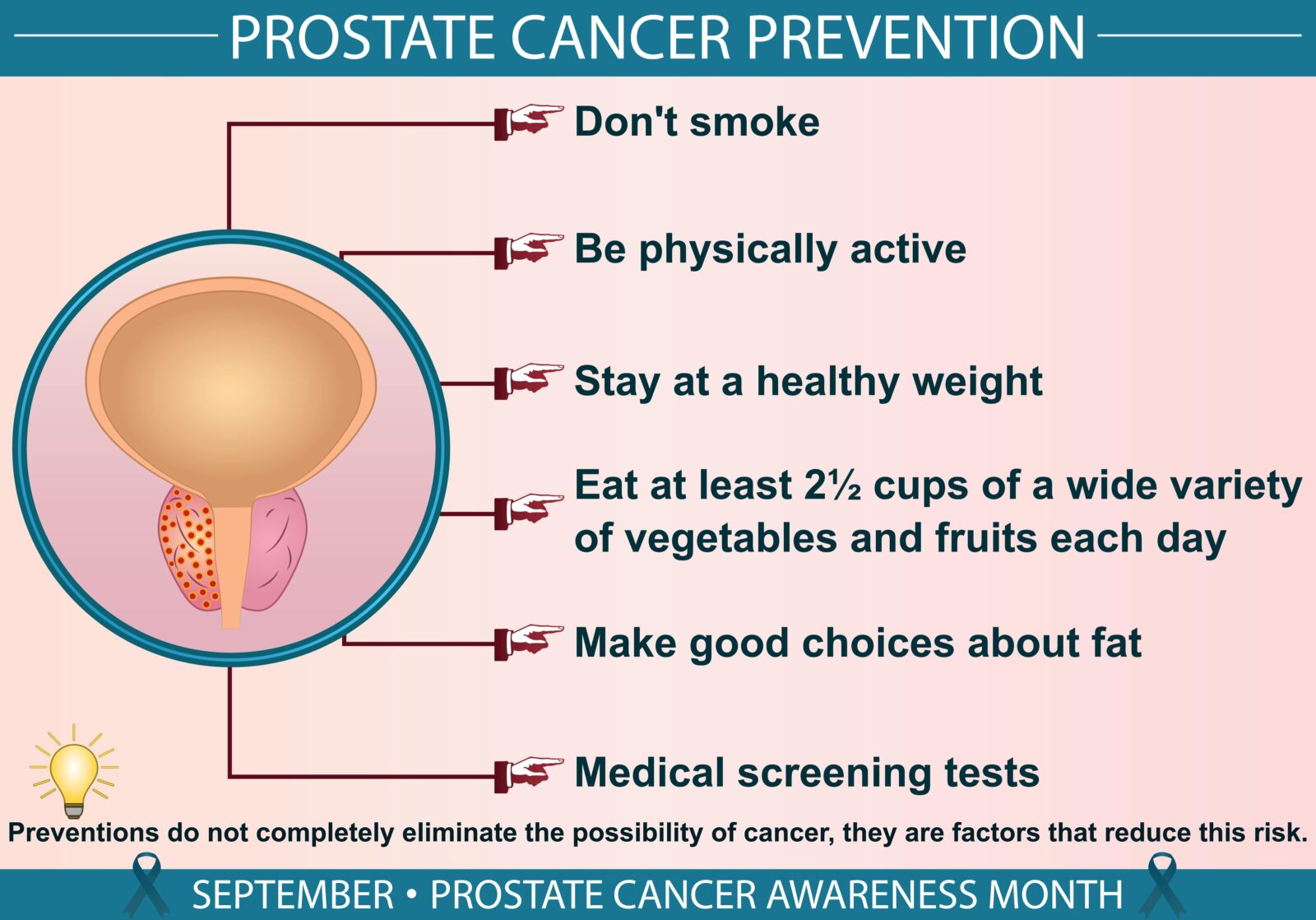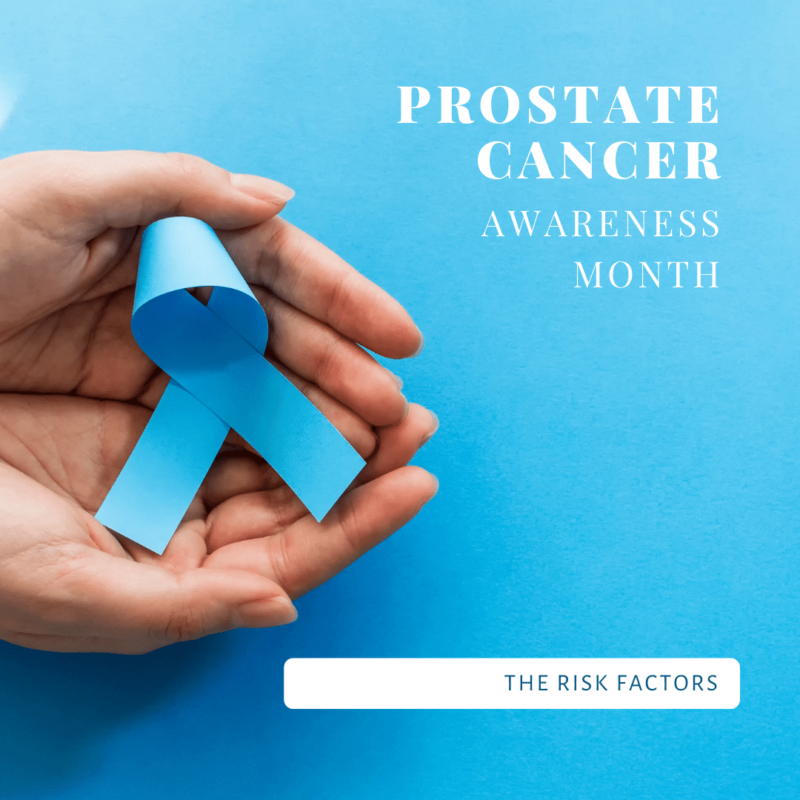September is Prostate Cancer Awareness Month, and in honor of that we wanted to take a look at the risk factors for prostate cancer. Many men are concerned about their prostate health, and for good reason. Prostate cancer is the most common cancer in American men, after skin cancer. In this blog post, we’ll discuss the different risk factors for prostate cancer and what you can do to reduce your risk.
Risk Factors for Prostate Cancer
Age:
The risk for prostate cancer increases the older you get. According to the Prostate Cancer Foundation, around 60% of all prostate cancer cases are diagnosed in men over the age of 65. Because of this, regular PSA screenings are recommended once hitting middle age.

Genetics:
As the most heritable major cancers, 58% of prostate cancer cases can be directly traced back to genetics per the Prostate Cancer Foundation. This means if you have a family member who has had prostate cancer, your risk for developing the disease is increased. Studies have shown that people are two times more likely to develop prostate cancer if they have a single family member with prostate cancer and four times more likely if they have 2 or more family members with the disease.
Race:
African American men are at a significantly higher risk (75% more likely) for developing prostate cancer than any other race. They are also twice as likely than other groups to die from the disease. Currently, the exact relationship between race and increased prostate cancer risk is not fully understood and is still being researched.
Diet:
A diet high in animal fat has been linked to an increased risk for prostate cancer. Diets that are high in saturated fats, like those found in red meat and dairy products, can increase your risk. A diet high in vegetables, on the other hand, has been linked to a decreased risk. While there has not been any direct evidence linking diet and cancer risk, several studies suggest a relationship between these two factors. Obesity is also thought to play a role since it is a risk factor for a variety of cancers.
Agent Orange Exposure:
Exposure to Agent Orange, a herbicide used during the Vietnam War, has been linked to an increased risk for prostate cancer. Veterans who were exposed to Agent Orange are at an increased risk for developing the disease. The Department of Veterans Affairs provides information on their website for veterans who were exposed to Agent Orange.
Other Prostate Conditions:
There are two other prostate conditions that many people think can increase your risk for developing prostate cancer. These include benign prostatic hyperplasia (BPH) and prostatitis. While these conditions are common, there is no evidence linking them to an increased risk for developing prostate cancer.
In Conclusion
In this blog post, we discussed the different risk factors for prostate cancer. Age, genetics, race, diet, and exposure to Agent Orange all play a role in increasing your risk for the disease. There are also two other prostate conditions that are common but do not increase your risk for prostate cancer. Prostate cancer is a serious disease that affects many men. By understanding the different risk factors, you can take steps to reduce your risk. If you have any concerns about your prostate health, be sure to talk to your doctor. Early detection is key to treatment and survival.





